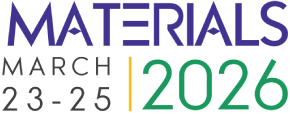Title : Reversibly modifying the properties of sustainable devices through reversible covalent bonds
Abstract:
Smart windows are sustainable devices because they reduce the cooling loads of buildings during hot and summer periods. As a result, the electricity consumed by a building for cooling with HVAC is much lower than buildings that do not use smart windows. Smart windows are enabled by a thin coating of an electrochromic material that reversibly changes its optical transmission with an applied potential. The electrochrome must therefore have a reversible redox behavior, change its optical transmission both consistently and reversibly with an applied potential, and filter the NIR region of the solar spectrum. While these properties can be designed into conjugated materials, the properties are locked into the conjugated framework owing to the robust covalent bonds. Converting the irreversible covalent bonds into reversible bonds opens the possibility of modulating the properties of the electrochrome after it has been integrating into smart windows. In the mid to long term, reversible bonds increase the usefulness of operating devices by regenerating the active materials as well as improving the recyclability of devices after their use. Within this context, it will be demonstrated that reversible bonds can be leveraged to reversibly change the properties of electrochromes. Specifically, multiple properties including redox potential, optical absorbance, fluorescence, and fluorescence intensity will be shown to be reversibly modulated by changing the conjugated framework courtesy of reversible covalent bonds. It will further be shown that the reversible bonds can be activated in solution and in the solid state for ultimately adjusting the properties of functioning devices.



